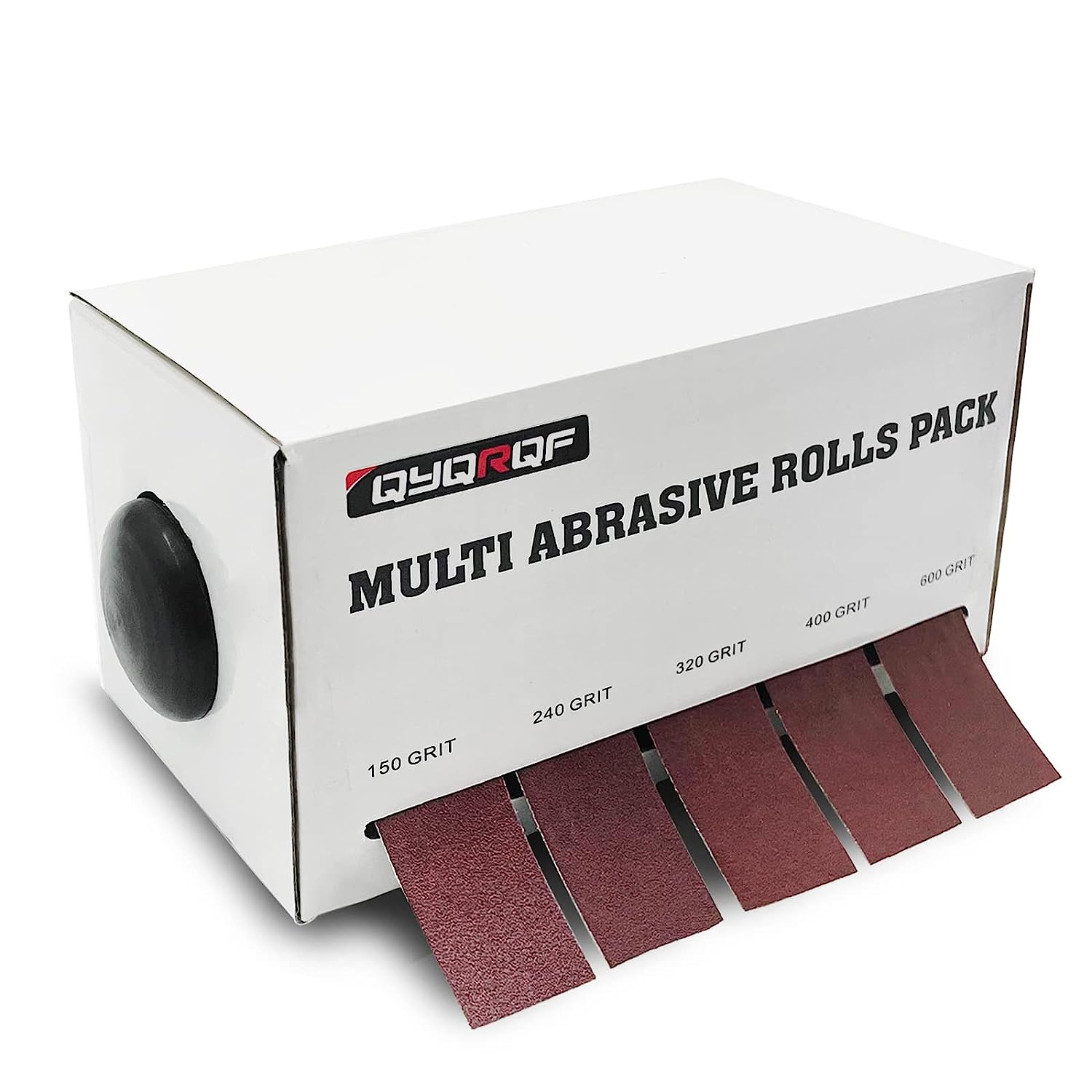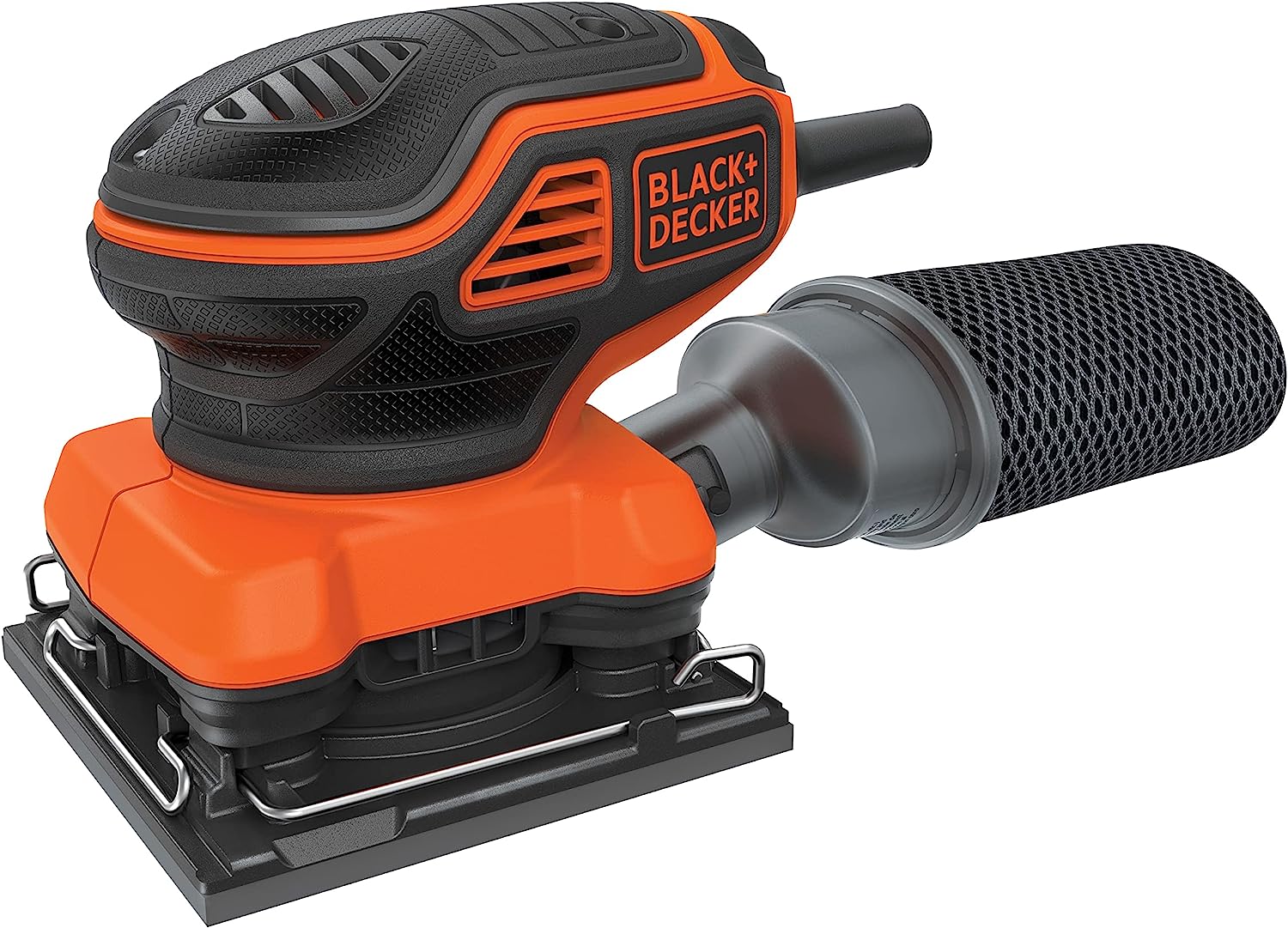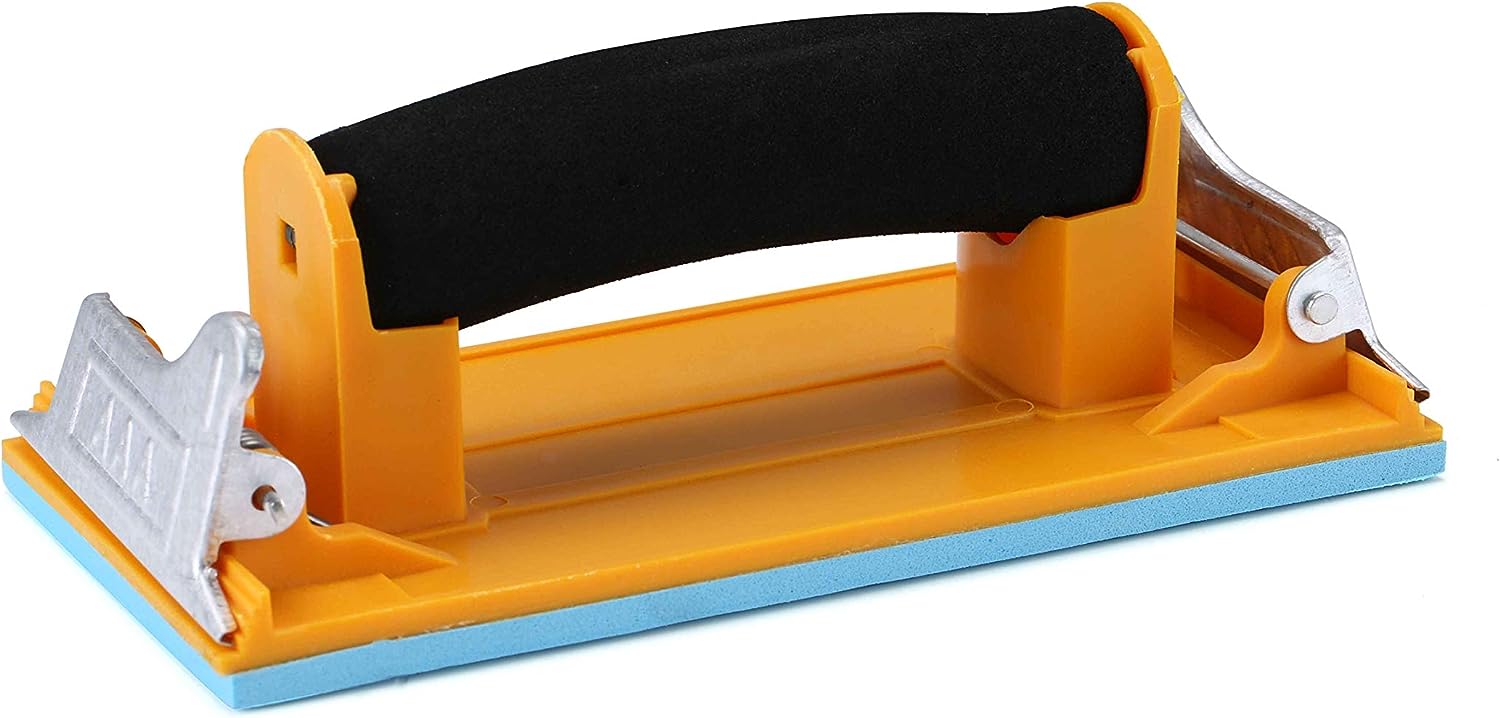How to Get the Smoothest Paint Finish: Sandpaper Selection Tips
When it comes to achieving a smooth and flawless paint finish, sanding plays a crucial role. Sanding helps to remove imperfections, smooth out surfaces, and create a clean canvas for paint application. However, not all sandpapers are created equal. The right sandpaper selection can make a significant difference in the final outcome of your paint job. In this article, we will explore the various types of sandpapers available, their grit sizes, and how to choose the right sandpaper for different surfaces and projects.
The Best Sandpaper for Paint

Emery Cloth Roll, 5 Grits Abrasive Sandpaper Rolls

BLACK+DECKER 2.0 Amp Electric 1/4 Sheet Orbit Sander

Aouker HS85180 Hand Sander
The Importance of Sanding in Paint Preparation
Sanding is an essential step in paint preparation as it helps to:
- Remove old paint or varnish
- Smooth out rough surfaces
- Level out imperfections
- Remove scratches and blemishes
- Create a better adhesion surface for paint
By sanding the surface before painting, you ensure that the paint adheres properly and provides a smooth and professional-looking finish. Skipping this step can result in paint peeling, uneven texture, and an overall unsatisfactory outcome.
Understanding Sandpaper Grit Sizes
Sandpaper comes in various grit sizes, which determine the coarseness or fineness of the abrasive particles on the paper. The grit size is indicated by a number, with higher numbers representing finer grits. Understanding the different grit sizes is crucial in achieving the desired smoothness for your paint finish.
Here are some common grit sizes and their recommended uses:
- Coarse Grit (40-60): Coarse grit sandpaper is ideal for heavy material removal, such as stripping old paint or smoothing out rough surfaces. It is not recommended for achieving a smooth paint finish.
- Medium Grit (80-120): Medium grit sandpaper is suitable for general sanding tasks, including removing minor imperfections and preparing surfaces for paint. It provides a good balance between material removal and surface smoothness.
- Fine Grit (150-180): Fine grit sandpaper is used for achieving a smooth surface before painting. It is ideal for sanding between coats of paint to remove any brush marks or imperfections.
- Extra Fine Grit (220+): Extra fine grit sandpaper is used for final sanding before applying a topcoat. It helps to achieve an ultra-smooth finish and is commonly used in automotive and furniture refinishing.
Types of Sandpaper
There are several types of sandpapers available, each designed for specific applications and surfaces. Let’s explore some of the most commonly used types:
Abrasive Paper
Abrasive paper, also known as sandpaper, is the most widely used type of sanding material. It consists of a paper or cloth backing with abrasive particles bonded to it. Abrasive paper comes in various grit sizes and is suitable for a wide range of sanding tasks.
Sanding Blocks
Sanding blocks are handheld tools that hold sandpaper securely in place. They provide a flat and even surface for sanding, making it easier to achieve a smooth finish. Sanding blocks are available in different shapes and sizes to suit various applications.
Sandpaper Sheets
Sandpaper sheets are large rectangular pieces of sandpaper that can be cut into smaller sizes as needed. They are versatile and can be used by hand or with a sanding block. Sandpaper sheets are available in different grit sizes and are suitable for both small and large sanding projects.
Sandpaper Rolls
Sandpaper rolls are long rolls of sandpaper that can be cut to the desired length. They are commonly used in industrial applications or for large-scale sanding projects. Sandpaper rolls are available in various grit sizes and are compatible with sanding machines.
Sandpaper Discs
Sandpaper discs are circular pieces of sandpaper that are attached to a backing pad. They are commonly used with power sanders, such as random orbital sanders or disc sanders. Sandpaper discs are available in different diameters and grit sizes.
Choosing the Right Sandpaper for Different Surfaces
The type of surface you are working on plays a significant role in determining the appropriate sandpaper to use. Here are some guidelines for choosing the right sandpaper for different surfaces:
Wood Surfaces
When sanding wood surfaces, it is essential to consider the type of wood and the desired finish. For rough wood surfaces or heavy material removal, start with a coarse grit sandpaper (40-60). Gradually progress to finer grits (80-120) for smoothing out the surface. Finish with a fine grit sandpaper (150-180) for achieving a smooth and paint-ready surface.
Metal Surfaces
When sanding metal surfaces, it is crucial to remove any rust, paint, or imperfections before painting. Start with a coarse grit sandpaper (40-60) to remove the existing paint or rust. Progress to medium grits (80-120) for smoothing out the surface. Finish with a fine grit sandpaper (150-180) for achieving a smooth and paint-ready surface.
Drywall Surfaces
When sanding drywall surfaces, it is essential to be cautious to avoid damaging the underlying material. Start with a medium grit sandpaper (80-120) to smooth out any joint compound or imperfections. Finish with a fine grit sandpaper (150-180) for achieving a smooth and paint-ready surface.
Glass Surfaces
Sanding glass surfaces requires a delicate touch to avoid scratching or damaging the glass. Use a fine grit sandpaper (150-180) or extra fine grit sandpaper (220+) with light pressure to remove any imperfections or rough edges. Wet sanding with water or a lubricant can help prevent scratching.
Tips for Sanding with Sandpaper
Here are some tips to ensure a successful sanding process:
- Always wear protective gear, such as safety goggles and a dust mask, to protect yourself from dust and debris.
- Use a sanding block or sanding tool to maintain a flat and even surface.
- Sand in the direction of the wood grain or surface texture for the best results.
- Start with a coarse grit sandpaper and gradually progress to finer grits for a smooth finish.
- Keep the sandpaper clean by periodically tapping it against a hard surface or using a sandpaper cleaning tool.
- Use light pressure when sanding to avoid damaging the surface.
- Remove any dust or debris before applying paint to ensure a clean and smooth finish.
Conclusion
Choosing the right sandpaper and using proper sanding techniques are essential for achieving a smooth and flawless paint finish. By understanding the different grit sizes and types of sandpapers available, you can select the most suitable option for your specific project. Remember to consider the surface material and desired finish when choosing sandpaper. With the right sandpaper selection and proper sanding techniques, you can transform any surface into a perfect canvas for paint.



















